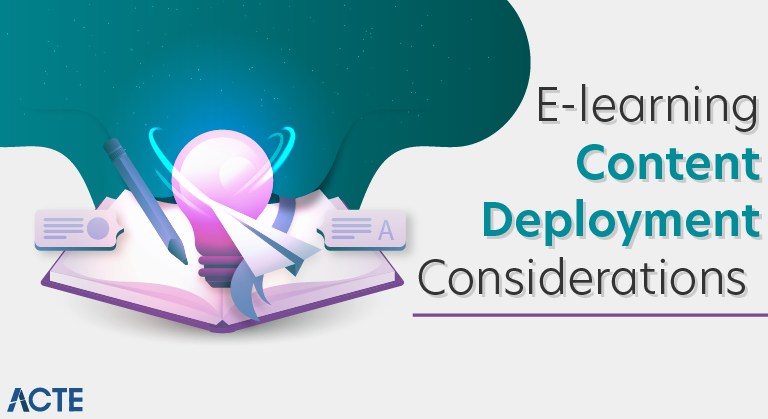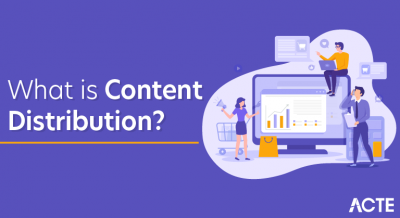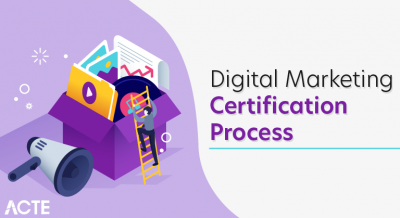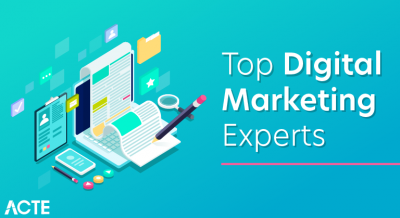
Free Whitepaper: Considerations of Deploying Enterprise-wide eLearning Content
eLearning is re-emerging as a solution for delivering online, hybrid, and synchronous learning regardless of physical location, time of day, or choice of digital reception/distribution device. This white paper considers some of the reasons that institutions and enterprises are turning to eLearning to help engage learners with ideas and information in revolutionary ways. It also takes a look at a number of the “Lessons eLearned” that summarize years of empirical evidence exploring learning technologies use and cognitive achievement. Finally, it offers practical suggestions for creating digital learning experiences that engage learners by building interest and motivation and providing opportunities for active participation.
Chapters include:
- Learning Management Systems (LMS) explained
- Why choose cloud-based LMS
- 9 factors to consider when choosing LMS
1 .What is e-learning? According to a team of leading experts[1], e-learning can be defined as “instruction delivered on a computer by CD-ROM, Internet or intranet.” While this is a fairly broad definition, e-learning, in a business environment, does contain almost all the features of traditional learning: Relevant content, instructional methodology, presentation tools (such as PowerPoint) and assessments,…all with the objective of enhancing knowledge and skills, as well as improving performance. To this definition, we can often add media (recorded audio and/or video) and software programs dedicated to the creation of e-learning courseware; again, not unlike traditional instruction processes.
In addition to the most prevalent self-directed delivery methods (called “asynchronous” training ), there is also instructor-led training (“synchronous” training) that can be delivered in a wide variety of ways, including online conferences and teleconferences. Sometimes we even find classroom training supplemented with self-directed e-learning. We generally refer to training that uses more than one method for delivery as “blended” learning.
2 .How does e-learning benefit your organization?e-Learning is a reusable, cost effective training process, where content is prepared and paid for once but used again and again. It can be deployed rapidly and it is totally flexible to meet the needs of an organization. Once created, the material can be delivered anywhere and anytime with virtually no additional cost. Since e-learning is primarily self-directed, there is no need for individuals to resolve the typical conflicts between their ongoing work projects and required training; the courses are available to meet each individual’s schedule. And since the training is computer based, it can be scaled very effectively…delivering the same training to large numbers of employees at multiple locations at virtually the same time…or at any time at all.
e-Learning has the capability of providing the same material presented in a classroom, but since it is completely focused on the subject matter, it can take about half the time of the traditional class to conduct. Since there is no classroom, no assembly and no travel, e-learning is not constrained to any particular time or scheduled amount of time. Modules can be developed and delivered in very small increments so that they focus on a finite subject scope…just what’s needed and no more. Since this form of training doesn’t have to rely on a live trainer, there’s no need to cover the fixed costs associated with bringing an instructor into the classroom..travel, per diem expenses, minimum fees, and so on. You can deliver a five minute training session just as effectively as a five hour session. Most importantly, courses are delivered online and on demand. They are self-paced and can be paused or stopped by the user at any point…and when ready, the user can return to exactly that point. Unlike traditional training, the user remains available to the job site at any time during training. Try that in a traditional classroom!
e-Learning is also specific to your own environment…tailored to your needs and your specifications, leveraging the experience of your experts. It’s not broad theory, it’s not academic…it’s just what you do. Training can be focused on the “how to” elements of the process; for example, it’s very easy to demonstrate how to complete the fields in a new form that has just been introduced, or to review the steps in a newly implemented process. When e-learning addresses a business process and regulatory compliance–to create alignment with organizational goals and mandatory requirements (an area of increasing concern to most organizations)–it can also help ensure that personnel are operating in a cohesive manner and according to the organization’s standard operating procedures. Compliance reduces liability.
e-Learning also adds directly to the bottom line. In a typical training environment, costs can run about $2,600 per day per person, considering travel, expenses, salaries and the cost of admission. This figure likely increases with the distance traveled and the amount of productive time lost. Then add to this constraint the lack of ability of most training to track and assess individual progress and provide reports in formats determined by the user (a major failure of most professional seminars), and you have a very tidy savings.
3 .What systems are used in e-Learning ?An e-learning system typically consists of three main elements:
A key element in any e-learning structure is a Learning Management System (LMS) or a Learning Content Management System (LCMS), a software program that stores and delivers the course content, and tracks student access and progress. A good example of an up-to-date system is the eLeaP LMS that leverages Web 2.0 technology. We’ll talk more about how an LMS works in a later section.
Another critical element of an e-learning system is a courseware development process (sometimes called authoring) that prepares the content for e-learning delivery. Despite the differences in technology and delivery methods, e-learning relies on essentially the same principles of most traditional learning methods, imparting new knowledge and skills that alter behavior and improve performance. Typically, e-learning courseware produces training courses that comply with the SCORM standard, a set of technical standards for e-learning software products. The purpose of the SCORM standard is to tell programmers how to write their code so that it can “play well” with other e-learning software. According to several industry experts, SCORM governs how online learning content and Learning Management Systems (LMS) communicate with each other. SCORM does not speak to instructional design or any other pedagogical concern, it is purely a technical standard. The purpose of this standard is to enhance the interoperability of training materials from one system to another.
A recent development has been what is called “rapid deployment” training, using PowerPoint output converted to Flash for web delivery. Commonly used courseware development programs of this genre include Articulate Presenter or Storyline) (www.articulate.com) and Adobe Presenter (www.adobe.com), along with a number of similar programs that convert PowerPoint presentations to Flash for easier storage and relatively universal access. In addition, there are a number of simulation programs such as Adobe Captivate and Camtasia (http://www.techsmith.com/camtasia.asp) that are used primarily to demonstrate and train users of software programs or to deliver “how to” technical presentations. In some cases, content can also include video productions (in whole or in part) for web or streaming media delivery. “How to” videos abound on You-tube.
Learning Content Management Systems (LCMS) provide these capabilities as an integrated part of their packages. Selecting an e-Learning and training platform such as an LCMS, offers a natural solution for those needing an easy to use system that can be implemented quickly.
The final element is a delivery and receiving platform that presents the training to the learner. This typically resembles a client/server environment when used on the Internet or an intranet, ensuring the user access to the material. On occasion, e-learning is delivered through a CD-ROM or DVD that is physically delivered to the learner. This media can be used on a computer or on any CD or DVD player capable of reproducing video, replacing, in a way, the old-fashioned training movie.
This delivery platform typically requires a host using TCP/IP. Today, many systems are in place that leverage Web 2.0 technology. Web 2.0 sites allow users to collaborate or to change content, whereas earlier systems limit users to just viewing the material presented. Web 2.0 systems improve access to simulations and games that enhance and reinforce learning. Make sure you select LMS/LCMS platforms which leverage the capabilities of Web 2.0 technology to the advantage of the user.
We also see e-learning delivered through teleconference presentations such as those provided by Webex or GoToMeeting. Although presentations are typically “live” and instructor-led, the platform can also be used to deliver static, pre-recorded materials. These programs are designed in ways that enable them to provide virtual classrooms; they use dynamics that enable the users and presenters to interact.
Keep in mind, any of these elements can be combined in a number of ways to enable a full spectrum of e-learning technology…from content creation, to content access and delivery. As an example, have a look at the eLeaP LMS/LCMS and you’ll find an excellent example of how these features can be combined into a single platform that serves virtually all the functions needed to produce and deliver e-learning. This system offers tools for creating, delivering, tracking, reporting, and administration, all on a hosted website dedicated to each specific user. What’s most remarkable about systems such as this is their ability to be deployed almost immediately, with setup taking less than a day. Students, too, find it user friendly and require little or no training to get started.
4 .What are the key challenges preventing e-learning success? Considering first the three elements outlined above, what prevents success in the creation and implementation of an e-learning system? While there are numerous obstacles preventing the success of any endeavor, the e-learning systems, because they are relatively new and somewhat unknown, certainly create their share of pitfalls, and then some. Obstacles can often be found in every aspect of e-learning…from content development through delivery to effectiveness.
Let’s examine the issue, then, as a body of mistakes:
- Wrong approach to content development: Although desired outcomes are the same for traditional training and e-learning, instructional design methods often fail to account for this. In simple terms, to be effective, e-learning must find new ways to involve the student in the learning process. The material will be ineffective if delivered simply as a textbook. It must become totally interactive so that we can replace (to some extent) the classroom instructor with increased student involvement. This means relying more heavily on exercises, quizzes, simulations and assignments than we would in a traditional environment; we need to duplicate to the extent possible the “see, do” method of training, allowing the student an opportunity to practice the new learning. And we need to do this frequently throughout the course.
- Wrong authoring tools: The tools you use to create e-learning must align with your training objectives. Authoring tools enable instructors or designers to build courses and supporting materials such as quizzes and simulations. Consider: Do you really want to propose training your current instructors in the use of Captivate? How about Flash?Remember, too, that today virtually all software packages that are used to create e-learning courseware require licensing. A relatively simple program that converts PowerPoint to a SCORM compliant Flash package, such as Articulate Presenter, can cost upward of $1,400. And that’s per seat! This feature is built into the eLeaP system and is free.
Authoring programs that are platform specific (e.g., Windows XP) will require maintenance in order to keep them current with new technology. This, of course, is generally not free; unless, that is, you are using a hosted e-learning platform that is essentially “rented” (such as eLeaP), and includes upgrades and maintenance. Programs such as these are often known today as Software as a Service, or SAAS (and sometimes simply SAS).
However, there are going to be occasions where you may require specialized training tools, for example if you are training students in the use of a particular software package. In this case, you can use programs such as Captivate or Camtasia that simulate the actual working environment and allow users to develop skills without affecting “live” data. If you lack the resources in house for doing this, a third party contractor might be a good choice. Or even better, if you are using a system such as eLeaP, you can find specific expertise through its customization capabilities.
Wrong system employed for training: The systems you use for courseware development, delivery, learning management and assessment must integrate with one another. Think of them as tools. But remember, to a hammer, everything is a nail.
You must, therefore, choose a Learning Management System with the flexibility to host a variety of courseware types…from interactive simulations to Flash video to real-time problem solving. For example, have a look at eLeaP’s Learning Management System (www.eleapsoftware.com). It has the flexibility to host virtually any type of courseware that is SCORM compliant. A lack of this flexibility will severely limit the materials that can be delivered to the student.
You must also consider the system’s ease of use. As with the eLeaP system, students must be able to gain easy access and find an intuitive interface that requires little or no training. The system must work on virtually all platforms using any standard web browser. It must operate flawlessly so that, from the learners’ perspective, the fact that the content is being delivered electronically is secondary to the learning process.
Wrong level of investment: There are many systems available today that require virtually no startup funding and that can be deployed in practically no time at all, e.g., the eLeaP LCMS. Why, then, would you want to consider a system that costs upward of $250,000 to start and requires a significant amount of resources to implement? After all, these are not full-blown ERP (Enterprise Resource Planning) systems that must integrate all organizational functions.
Avoid the heavy sales pitch that uses the scare tactics of systems integration capabilities. Generally speaking, a simple Application Programming Interface (API) can be developed at minimal cost to integrate any LMS into the organization’s Learning and Development recording system. Also keep in mind that many of these complex Learning Management Systems require a good deal of expensive, specialized technical support and training just to create courseware that is compatible with the delivery system. Again, the fact is that systems such as eLeaP require no programming or startup costs at all, deployment support is free, implementation and online training is free and 24/7 customer support is free.
The bottom line: Think twice about paying extra for course development tools, implementation training and ongoing technical support. With eLeaP, all of these are included.
5 .What is involved in implementing an e-learning system? The use of sound planning techniques is probably the best first step to implementing an e-learning system. Good planning should reflect a strategy that is in line with your organization’s resources so you won’t be caught in the middle of an implementation without funds or personnel to finish.
The first step in developing a workable plan is to analyze the current situation by gathering factual data. If you have a system in place now, evaluate its effectiveness…both in terms of throughput and user satisfaction. Even if this is the first time your organization will have its own dedicated training platform, you can still go ahead by developing some statistics. Consider these elements:
- Number of current users.
- Estimated number of users in three years.
- How many courses will you want to offer?
- How often will new courses be introduced?
- What is the primary nature of the courses: What percentage are hands-on simulations; what percentage are academic?
- Will you use multimedia formats (audio/video/animation)?
- What in-house resources do you need to manage the system?
- What budget is available?
The next step is to find internal stakeholders that can assist you with a needs analysis and become part of an ongoing team that will evaluate potential vendors. Establish ground-rules for team operations such as meeting times, roles and responsibilities, and so on.
With the team engaged, develop a set of objectives. It is important that these objectives are based on the statistics you assembled in the first step and are in line with the expectations of the team. From these objectives, create an outline of what features are needed to meet these objectives. Often, this is put into the format of a Statement of Work. List features as “required” or “desired” so that you are sure to get the necessary elements before using up your budget.
Next, establish a timeline for the project, outlining each of the steps that will be required and the time it will take to complete. You will also need to indicate which individual team member will lead in the completion of each task. Work this into a calendar format so you will know what element is due when and what tasks must be completed before going on to the next.
Then, research the e-learning systems provider market. Determine what suppliers are potentially qualified based on the team’s criteria. Request a proposal from each of the vendors you find relevant, addressing their ability to meet your detailed requirements. Ask yourself if their systems meet your needs and where the gaps exist. Most e-learning providers will have a free trial available so that you and your team can test drive their system. eLeaP, for example, offers both online demos as well as a free, hands-on 30 day trial.
Once you have established your objectives and criteria, researched the market for systems that fit, created a short list of two or three platforms that meet your needs, go on to the next step, outlined below, of selecting a vendor.
6 .How do you select a vendor?
Vendor selection is akin to a virtual minefield: One wrong step and you are a goner. Nevertheless, an organized, comprehensive selection process is exactly what is required. You can do this best if you develop a checklist so that you are certain that you have asked each potential vendor the same questions and are comparing oranges to oranges.
In any vendor selection process there are generally a number of important criteria, such as pricing, technology, quality, service and so on. Many professional procurement personnel use a checklist to develop a comparative rating for each of the considered suppliers.
Using the checklist, each major category is assigned a weighting that is a percentage of a total that adds up to 100. The categories contain a subset of questions, the answers to which are rated for each potential vendor, typically on a scale of 1 to 5 or 1 to 10. Thus price may be equal to 40% of the total, allocating its subsets a portion of the 40% and then scoring the answers to each of the subset questions. For example, under Technology we may want to rate Web 2.0 capability. We assign a 5% value to it, remembering that the total of all the subset percentages must add up to the overall percentage assigned to that category. If a potential vendor is fully Web 2.0 implemented we would assign a score of 5 (on a 1-5 scale); if not at all we would assign a score of 1.
Doing the math:
Web 2.0 Capability = 5% Vendor A is scored as a 5; therefore 5 x .05 (5%) = 0.25
Vendor B is scored as a 1; therefore 1 x .05 = 0.06
The score for each subset of the category is totaled and that becomes the vendor’s score for that category. Each of the categories are subsequently totaled to provide an overall score for that vendor. Keep in mind, though, since the ratings are most often based on opinions rather than pure facts, so are relatively subjective. You might consider using a team to develop consensus for each of the ratings, making it a bit more objective through multiple inputs.
Here is a checklist that you might consider as a starting point for your own:
(Assign your own values)
Vendor Qualifications
- Does the vendor serve organizations similar to yours?
- Is the vendor’s customer base sizeable enough to ensure continued operation?
- Are customer references available?
- Does the vendor support customer implementations with training and support?
- Can the vendor assure you of a successful implementation?
- Does the vendor have a proven plan for implementation of its system?
- How long has the vendor been operating in the e-learning market?
Pricing
- Is pricing in line with similar offerings?
- Does the vendor rely primarily on revenue from its commercial system or is customization a large part of its income?
- Does the vendor offer a base price that scales with volume?
- Does the price include everything you will require to get started?
- Can you see a relationship between cost and quality?
Quality
- Does the vendor guarantee successful operation?
- Is there a stated quality policy?
- Are “bugs” resolved quickly or do they wait for a future release?
- How easy is the system to use: How much training is required?
- Does the system require minimal resources for administration?
- How reliable is the system: How often and for how long does it go down?
Technology
- Is the vendor’s program based on current instructional design methods?
- Is the vendor’s staff properly trained and certified?
- Is the system’s technology up to date? State-of-the-art?
- Does the vendor rely on outside support for its basic services?
- Is the system capable of delivering current types of media?
- Does the vendor provide multiple solutions for your needs?
- Can the system operate with various authoring tools?
- Does the system support user interactivity?
Support
- Are maintenance fees readily available?
- Does the vendor require the purchase of periodic updates?
- Does the vendor provide 24/7customer support?
- Are the employees that provide the support knowledgeable?
- Does the system support multiple languages?
It is very important to remember to do the math (as outlined earlier) when using this checklist. Doing so will enable you to gain buy-in from your internal customers (especially if they participate in its development) and help you select the supplier that offers the best overall value.
7. How do I roll out the e-learning system to ensure user participation?
Most of us are familiar with the line “The best laid plans of mice and men…” meaning that even the most comprehensive plans often risk failure. The point here is that unless we follow through with the implementation of our plans effectively, we will not be able to ensure that there will be a successful outcome.
One of the most common failures in implementing new systems, or in most projects for that matter, is the lack of communication. Like the weather, everyone can complain about communication failures, but no one seems inclined to do anything about it. So the first step in any implementation should be to develop and launch a communication plan.
A communication plan generally comes from the implementation team (or its leader) and links each of the major steps in bringing on the new system to some form of communication with those who need to know. The initial communication can be in the form of an email from a senior executive, outlining the e-learning systems purpose, objectives and timeline, and requesting input be directed to the team leader if any employees have suggestions, questions or issues. Subsequent communication generally will come from the team and provide relevant updates on what the specifics of what the system will contain, when it will be ready and how it will impact employees. Often, companies include this in their internal newsletter or through posters put up around the facilities. It is important, though, to be sure to announce the project’s initiation and actual launch in a way that reaches everyone and answers as many questions as possible.
Within the e-learning project team, it is also critical to assess key risks to the implementation right from the start, when they are likely to occur and who is responsible for monitoring them. For example, can necessary personnel resources become unavailable due to unplanned travel? Or is the development of courseware taking longer than expected? Is there a technical problem with including hands-on interactions in the courses? (Hopefully, the system you select is as simple to operate and implement as eLeaP.) Risks that have been identified early can often be controlled or mitigated without much disruption; those that sneak up on you are often disastrous.






